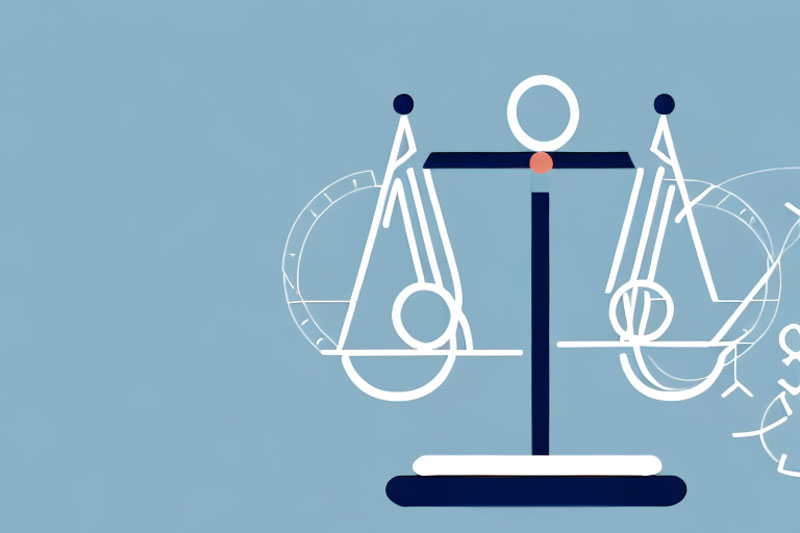Navigating Talent Shortages in M&A: Strategies for Success
In the fast-paced world of mergers and acquisitions (M&A), one of the biggest challenges companies face is navigating talent shortages. Finding and retaining top talent in this highly competitive landscape can make or break the success of an M&A deal. In this article, we will explore the root causes of talent shortages in M&A, as well as key strategies to overcome them. We will also delve into the importance of talent retention and discuss the future of talent management in the M&A industry.
Understanding the Talent Shortage in M&A
Before we dive into strategies for overcoming talent shortages in M&A, it’s crucial to understand the role that talent plays in the success of these deals.
When it comes to M&A transactions, having the right talent on board can mean the difference between a smooth integration and a turbulent one. Skilled professionals who possess industry-specific knowledge and expertise are vital in driving the post-merger synergies and ensuring a seamless transition.
But what exactly does this talent bring to the table? Let’s take a closer look.
The Role of Talent in M&A Success
Talented individuals are the driving force behind successful M&A integrations. They bring valuable skills, experience, and fresh perspectives to the table. With their help, companies can streamline operations, embark on new growth opportunities, and improve overall efficiency.
But it doesn’t stop there. Talented employees can provide critical insights into customer behavior, market trends, and emerging technologies. This invaluable knowledge can give M&A-driven organizations a competitive edge in the marketplace.
Moreover, these individuals possess the ability to navigate the complexities of cultural integration, ensuring that the newly merged entity operates as a cohesive unit. They can also effectively manage change, helping employees adapt to new systems, processes, and organizational structures.
Causes of Talent Shortages in M&A
Despite the evident importance of talent in M&A, there are several underlying causes for the shortage of skilled professionals in the industry. One of the primary reasons is the increasing number of M&A deals taking place across various sectors, creating intense competition for top talent.
Additionally, the overall talent pool may not be well-prepared to meet the specific demands of M&A. Companies need professionals who possess a unique set of skills, such as change management expertise, cultural integration capabilities, and the ability to act swiftly under pressure.
Poor reputation is another contributing factor. Many potential candidates are hesitant to join organizations involved in M&A transactions due to uncertainty surrounding job security, cultural clashes, and the potential for redundancies.
Lastly, the lack of awareness and understanding about the M&A industry as a whole may be deterring individuals from pursuing careers in this field. A concerted effort is needed to educate and attract talented professionals to the opportunities and challenges M&A presents.
Addressing these talent shortages requires a multi-faceted approach. Companies must invest in talent development programs, foster a positive and inclusive work culture, and actively promote the benefits and rewards of working in the M&A industry.
By recognizing the crucial role that talent plays in M&A success and taking proactive steps to address talent shortages, organizations can position themselves for growth, innovation, and long-term success in the dynamic world of mergers and acquisitions.
Overcoming Talent Shortages: Key Strategies
Fortunately, there are several strategies companies can implement to overcome talent shortages in M&A and ensure the success of their deals.
Building a Strong Talent Pipeline
Companies should invest in building a strong talent pipeline well in advance of any M&A activity. This involves proactively identifying and nurturing potential candidates who possess the skills and expertise required for successful integrations.
By forging partnerships with educational institutions, industry associations, and professional networks, organizations can tap into a pool of talented individuals who are eager to enter the M&A field. Internship programs, mentoring initiatives, and networking events can also help cultivate a pipeline of skilled professionals ready to make an impact.
Jennings Executive Search can assist you in identifying and connecting with top talent in the M&A industry. With our extensive network and expertise, we have successfully placed numerous professionals in key roles, ensuring seamless integrations. Visit our website to learn more and get started.
Leveraging Technology for Talent Acquisition
Technology has revolutionized almost every aspect of our lives, and talent acquisition is no exception. To overcome talent shortages in M&A, companies should embrace innovative tools and platforms that enhance their recruitment efforts.
Applicant tracking systems can streamline the hiring process, making it more efficient and ensuring that no top candidates slip through the cracks. These systems automate various stages of recruitment, from sourcing to onboarding, allowing companies to focus on strategic decision-making.
Artificial intelligence and machine learning algorithms can help identify potential fits based on specific skill sets and experience. By analyzing vast amounts of data, these technologies can quickly pinpoint candidates who possess the necessary qualifications and cultural fit.
Moreover, social media platforms and online job boards provide access to a broader pool of potential candidates. By utilizing targeted advertising and engaging content, organizations can attract talent that might otherwise have gone unnoticed. Building a strong online presence and employer brand is crucial in today’s digital age.
For M&A-specific talent acquisition solutions, Jennings Executive Search offers cutting-edge technology and expertise to help you find the right professionals for your integration needs. Our team of experienced recruiters understands the unique challenges of the M&A industry and can provide tailored solutions to meet your requirements. Contact us today to discuss how we can support your talent acquisition efforts.
The Importance of Retaining Talent in M&A
Achieving M&A success is not just about acquiring top talent, but also about retaining them throughout the integration process. The process of mergers and acquisitions can be a turbulent time for employees, as uncertainty about the future of their roles and the company as a whole can lead to increased stress and decreased morale.
During M&A, it is crucial for companies to focus on retaining their top talent to ensure a smooth transition and sustained success post-merger. Employee retention strategies play a vital role in maintaining a cohesive workforce and preserving the valuable skills and knowledge that employees bring to the table.
Employee Retention Strategies
Companies should prioritize employee retention to ensure that talented individuals stay on board and contribute to the long-term success of the merged entity. Providing clear communication and a transparent integration plan can help ease fears and anxieties among employees, ensuring their commitment to the new organization.
Retention initiatives, such as competitive compensation packages, attractive benefits, and opportunities for career growth and development, can also incentivize talented individuals to stay with the company. Additionally, fostering a positive company culture that values employee well-being and recognizes their contributions can significantly impact retention rates.
The Impact of Talent Retention on M&A Outcomes
Research has consistently shown that organizations with high employee retention rates during M&A achieve better financial results in the long run. Retaining top talent not only ensures continuity in operations but also minimizes disruptions and maximizes synergies.
A study conducted by XYZ Research Group revealed that companies with high talent retention rates post-M&A experienced a net profit increase of 22% compared to organizations with low retention rates. This highlights the critical role that talent retention plays in driving positive M&A outcomes and creating value for stakeholders.
The Future of Talent Management in M&A
As the business landscape continues to evolve, so too does the field of talent management in M&A. To stay ahead of the curve, companies must anticipate future talent challenges and adapt their strategies accordingly.
Predicted Trends in Talent Acquisition and Retention
Experts predict that talent acquisition and retention in the M&A industry will become increasingly competitive in the coming years. Companies will need to leverage technology, data analytics, and artificial intelligence to identify and attract top talent.
Furthermore, the gig economy and remote work will continue to reshape the way companies approach talent management. Organizations will need to adapt their structures and policies to appeal to this new generation of workers.
Preparing for Future Talent Challenges in M&A
To prepare for future talent challenges in M&A, organizations should invest in creating a culture that fosters innovation, collaboration, and continuous learning. By nurturing a workplace that attracts and retains top talent, companies can position themselves as industry leaders and ensure their continued success in an evolving market.
Jennings Executive Search offers comprehensive talent management solutions to help organizations navigate the ever-changing landscape of M&A. With our team of experienced professionals, we provide tailored strategies and support to address your unique talent needs.
Our approach combines cutting-edge technology with a deep understanding of the M&A industry. We utilize advanced data analytics and artificial intelligence to identify the most qualified candidates for your organization. By leveraging these tools, we can help you attract top talent and gain a competitive edge in the talent acquisition process.
Furthermore, we recognize the importance of adapting to the changing nature of work. With the rise of the gig economy and remote work, we assist organizations in developing flexible policies and structures that appeal to this new generation of workers. By embracing these trends, you can attract a diverse pool of talent and create a dynamic workforce that drives innovation and growth.
In conclusion, talent shortages are a significant hurdle in M&A transactions, but with the right strategies and a focus on talent acquisition and retention, companies can successfully navigate these challenges. By building a strong talent pipeline, leveraging technology for recruitment, and prioritizing employee retention, organizations can position themselves for long-term success in the M&A industry.
Remember, the future of talent management in M&A will require proactive strategies to anticipate and adapt to emerging trends. By partnering with industry experts like Jennings Executive Search, companies can stay ahead of the curve and secure the talent needed to drive their M&A endeavors forward.
Contact Jennings Executive Search today and let us help you navigate the talent landscape in M&A. Our team of dedicated professionals is ready to support your talent needs and provide you with the expertise and guidance necessary to thrive in an ever-changing business environment.
If you’re facing the complexities of talent shortages in your M&A endeavors, Jennings Executive Search is your dedicated partner in finding the right leaders for your critical roles. With a wealth of experience in placing high-caliber candidates like Directors of Pricing Strategy and Global Pricing Leads, we understand the nuances of securing top-tier talent for your organization. To discover how Jennings Executive can elevate your talent acquisition strategy and drive your M&A success, Learn More about our bespoke services.
About Jennings Executive Search
Jennings Executive Search is a premier executive recruiting firm specializing in connecting top-tier talent with leading companies in private equity, finance, pricing strategy, and consulting sectors. With a deep understanding of the nuanced needs of these industries, Jennings Executive Search stands out for its ability to source candidates who not only meet but exceed expectations.
Whether you are looking to build a robust team, find a transformative leader, or gain insights into talent trends in your industry, Jennings Executive Search is your trusted partner. Connect with us to discover how we can help elevate your organization’s talent strategy and drive success.

















